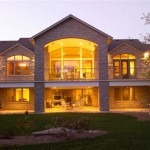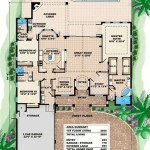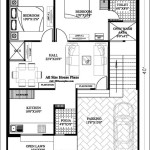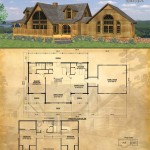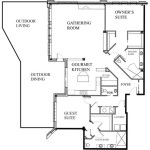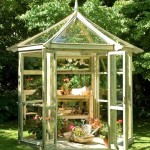Nantucket Style House Plans: A Comprehensive Guide
Nantucket style house plans represent a distinct architectural tradition rooted in the eponymous New England island. These plans embody a blend of practicality, resilience against the coastal elements, and a timeless aesthetic that appeals to homeowners seeking understated elegance. Characterized by specific design features and construction techniques, Nantucket style homes offer a unique blend of historical charm and modern functionality. This article explores the key elements of Nantucket style architecture, examining the features, common design considerations, and suitability of these plans for various locations and lifestyle preferences. ### Key Aspects of Nantucket Style Architecture Several distinguishing characteristics define Nantucket style homes. These features collectively contribute to the recognizable aesthetic and functional advantages associated with this architectural style.Firstly, the prominence of weathered grey shingles is a defining element. These shingles, typically made of cedar, provide exceptional protection against the harsh coastal weather. The natural weathering process transforms the color over time, creating the signature grey hue that is synonymous with the Nantucket look. This natural pigmentation not only contributes to the aesthetic charm but also reduces the need for frequent painting or staining, minimizing maintenance demands.
Secondly, simplicity and symmetry are hallmarks of Nantucket design. The overall structure often features a rectangular or square footprint, promoting efficiency in construction and space utilization. Windows are typically aligned symmetrically on the facade, enhancing the visual balance and classic appearance of the home. This emphasis on symmetry often extends to interior layouts, creating a sense of order and harmony throughout the living spaces.
Thirdly, the incorporation of dormers is a prevalent feature. Dormers serve multiple purposes in Nantucket style homes. They provide natural light and ventilation to attic spaces, transforming them into usable living areas like bedrooms or studies. Dormers also enhance the architectural interest of the roofline, breaking up the monotony of a large, sloping surface. The style and placement of dormers can vary, but they are almost always present in a significant number on the front and back facades.
Fourthly, minimal ornamentation is a deliberate choice in Nantucket style architecture. The focus is on clean lines, natural materials, and a subtle elegance achieved through proportion and detail rather than elaborate embellishments. This understated approach reflects the practical origins of the style, which prioritized functionality and durability over extravagant displays.
Finally, functional porches and decks are integrated into the design. Considering the coastal lifestyle, Nantucket homes often feature covered porches or expansive decks that provide outdoor living spaces. These areas offer opportunities for relaxation, entertainment, and enjoying the surrounding landscape. The design of these outdoor spaces often incorporates elements like trellises, pergolas, or built-in seating to enhance their functionality and aesthetic appeal.
### Considerations for Selecting Nantucket Style House Plans Selecting a Nantucket style house plan requires careful consideration of several factors to ensure the design aligns with individual needs, site conditions, and budget.Site orientation and exposure are crucial factors. The placement of the home on the lot should maximize sunlight exposure during the winter months and provide opportunities for shade during the summer. Strategically positioned windows and overhangs can help regulate the interior temperature and reduce energy consumption. The prevailing winds should also be considered to minimize exposure to harsh weather and optimize natural ventilation.
Local building codes and regulations must be strictly adhered to. Coastal areas often have stringent building codes related to wind resistance, flood protection, and environmental preservation. The house plan should comply with all applicable regulations to ensure the safety and longevity of the structure. Engaging with local building authorities early in the planning process can help identify potential challenges and ensure a smooth permitting process.
Material selection plays a vital role in the durability and aesthetic appeal of a Nantucket style home. While weathered grey shingles are a defining characteristic, alternative materials can be used if cedar is not readily available or cost-effective. Durable composite materials that mimic the look of natural cedar can provide similar protection against the elements with reduced maintenance requirements. Interior materials should also be selected for their durability, ease of maintenance, and compatibility with the overall aesthetic.
Interior layout and functionality are paramount. The interior layout should be designed to meet the specific lifestyle needs of the occupants. Open floor plans are common in modern Nantucket style homes, promoting a sense of spaciousness and facilitating social interaction. Efficient circulation patterns, ample storage space, and well-defined zones for living, dining, and sleeping are essential considerations. The placement of windows and doors should maximize natural light and ventilation while providing privacy and security.
Budget constraints should be realistic. Building a home can be a significant investment, and it's crucial to establish a realistic budget before starting the project. The cost of materials, labor, and permits should be carefully estimated. Value engineering techniques can be employed to reduce costs without compromising the structural integrity or aesthetic appeal of the home. Prioritizing essential features and phasing the construction process can also help manage budget constraints.
### Adapting Nantucket Style to Different Locations and Lifestyles While traditionally associated with coastal New England, Nantucket style homes can be adapted to various locations and lifestyles with careful planning and design modifications.Adapting to warmer climates requires adjustments to enhance ventilation and minimize heat gain. Larger windows, screened porches, and lighter-colored roofing materials can help reduce the interior temperature. Landscaping with shade trees and strategically placed shrubs can also provide natural cooling. The orientation of the home should be optimized to minimize exposure to direct sunlight during the hottest part of the day.
Adapting to colder climates requires enhanced insulation and heating systems to maintain comfortable interior temperatures. High-performance windows and doors, insulated walls and roofs, and efficient heating systems are essential considerations. The layout of the home should be designed to minimize heat loss, with living areas oriented towards the south to maximize solar gain. A well-insulated foundation can also help prevent heat loss through the ground.
Adapting to different lifestyles involves customizing the interior layout to meet specific needs. Families with young children may prioritize open play areas and easy access to outdoor spaces. Empty nesters may prefer a more compact and low-maintenance design. Home offices, media rooms, and guest suites can be incorporated into the plan to accommodate specific lifestyle requirements. Universal design principles can be implemented to ensure accessibility for people of all ages and abilities.
Blending Nantucket style with other architectural influences can create unique and personalized designs. Incorporating elements of Craftsman, farmhouse, or contemporary styles can add visual interest and reflect individual preferences. However, it's important to maintain the core characteristics of Nantucket style, such as the weathered grey shingles, simple symmetry, and minimal ornamentation, to preserve the overall aesthetic integrity. A cohesive design approach is crucial to ensure that the blended elements complement each other and create a harmonious composition.
Sustainable design principles can be integrated into Nantucket style house plans to minimize environmental impact and reduce operating costs. Energy-efficient appliances, water-saving fixtures, and renewable energy systems can significantly reduce resource consumption. Using recycled or reclaimed materials can also contribute to a more sustainable construction process. Optimizing the building envelope to minimize air leakage and maximizing natural light and ventilation can further reduce energy demand. Integrating sustainable landscaping practices, such as xeriscaping and rainwater harvesting, can also minimize water usage and promote biodiversity.
In conclusion, Nantucket style house plans provide a blend of timeless elegance, practical functionality, and resilience against coastal elements. These plans are distinguished by features like weathered grey shingles, simple symmetry, dormers, minimal ornamentation, and functional porches or decks. These aspects contribute to the overall charm and usability that makes Nantucket style homes so appealing. Careful consideration of site conditions, budget constraints, and lifestyle needs is crucial. Adaptations can be made to accommodate different climates and individual preferences, always maintaining the core aesthetic principles of the style.
Nantucket Country House Spitzmiller Norris Plans

Nantucket Retirement House Plans Ranch Floor

House Nantucket Plan Green Builder Plans

House Plan Nantucket Sound Sater Design Collection

Inside A Well Collected Nantucket House By Bodron Fruit 2024

Nantucket Style Chic Design Inspiration House Exteriors O Lovely Exterior Styles

House Nantucket Plan Green Builder Plans

Nantucket Style House Plans Homes Styles

Building A Nantucket Style Home

Classic Nantucket Inspired Dream Home Bunch Interior Design Ideas

